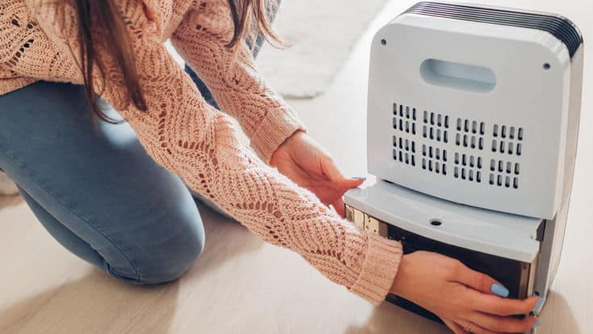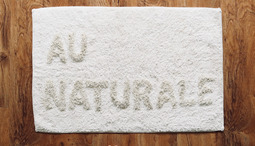When your house seems suffocating or mouldy, and moisture solidifies on walls and pipelines, it's an indication of too much humidity. Showering, using the dishwasher or washing machine, and cooking all add moisture to the air, which may be troublesome, especially if you live in an area where moisture content is already excessively high.
A house's humidity level should be maintained not only for your family's healthiness but also for the house's structural integrity. A range of issues can arise when the moisture level quantity of water vapour in the air—rises or falls too high or too low. Read this guide and know how you can buy the right dehumidifier for your home, wardrobe, and car.
Wanna buy a dehumidifier? First of all, read the blogs on LuminaBlog - a platform in which basics on different buying-oriented topics are discussed. Moreover, reading the reviews about the best shopping websites is something which helps throughout the decision process.
Then, know what a dehumidifier is.
What is a dehumidifier?
The amount of moisture permeating the air in an area is measured by humidity. In the long run, too much dampness in the air spawns allergies, weakening the human immune system and causing other difficulties.
Humidity affects our wellbeing by affecting how well our bodies wick away perspiration, as well as how readily we breathe and respond to allergens like mould spores and mildew. It may happen both inside and outside, and it can affect your health and how you feel daily.
We also have dehumidifier crystals that are cost-effective and efficient alternatives for dehumidifier machines which work for a small time period.
A dehumidifier can help to eliminate excess moisture from your home's air. Because there is less moisture in the air, the air conditioner system can better manage the temperatures in the structure without first controlling the moisture. A correctly utilised dehumidifier may assist maintain even confined areas adequately ventilated and in the safe range for humidity management, as well as help you repair your house after a flood by preventing mould from spreading behind the walls.
Why do you need a dehumidifier?
Dehumidifiers, to put it simply, reduce the humidity level in a room. They produce a more pleasant atmosphere clear of moist air, humid temperatures, and hazardous mould development.
Maintaining a lower humidity and temperature over time can help prevent mould or mildew problems from developing. It also takes care of allergies that might arise as a result of humid conditions. Dehumidifiers are also concerned with pest control. Adding a dehumidifier to your cooling system keeps the air dry and prevents your air conditioning system from overworking to cool your humid environment. Dehumidifiers also help to protect the structural integrity of your home, which is compromised by excessive moisture. Excess moisture, especially in your subfloor or basement, can cause structural damage such as decaying support beams, collapsing floorboards, and hardwood floor degradation.
Different Dehumidifiers
There are different dehumidifiers according to the environment.
We can say, there is a car dehumidifier - reduces the inner humidification of the car which can cause suffocation and make the car look steamy.
Another considerable dehumidifier for closet humidity problems is a wardrobe dehumidifier which prevents clothes from getting mildew and woodwork to catch mould. Moreover, it stops mould from growing on the walls of a closet.
For bigger areas and giant electricity buildups, industrial humidity problems, we need a dehumidifier which helps control the moisture levels for safe operation. It is called an industrial dehumidifier.
How to choose a dehumidifier?
In the buying decision for dehumidifiers, we have different factors to look into.
Budget
While money should not be the sole consideration, it is something to weigh before choosing. You can check dehumidifier pricing once you know what type, size, and specific features you want. To obtain a good price and a good dehumidifier, choose a product that is neither the cheapest nor the most costly. Well, small dehumidifiers are budget-friendly but they only work for limited areas.
Types
When purchasing a dehumidifier, the first thing to consider is the type. Humidifiers come in a variety of shapes and sizes, each suited to a certain location and scenario. The easiest to use is a whole-room unit, which comes in a variety of sizes. One dehumidifier can’t be used for all types of environments. That’s why different dehumidifiers are designed for different environments. Some dehumidifiers are mentioned below.
Refrigerant dehumidifier
A refrigerant dehumidifier works in a similar way in which your refrigerator does. The condensation process is followed by the fan which continuously pushes the moisture content into the plates and that moisture drips into the water tank and the process continues.
Desiccant dehumidifier
A desiccant dehumidifier uses a process called adsorption to reduce humidity in a room. Humid air is taken into the dehydrator and circulated through a desiccant wheel loaded with silica gel during this operation. Extra humidity is absorbed by the silica gel before being expelled as warm dry air from the dehumidifier. The efficiency of refrigerant dehumidifiers is best at normal temperatures, and it worsens drastically as the temperature drops.
Whole-house dehumidifier
A whole-house dehumidifier is designed in which the ventilation process is seen. The Lofty is a ventilation system that is said to be the most effective in removing moisture, mildew, and humidity from your house. Lofty dehumidifiers are less costly to operate than even the most cost-effective plug-in dehumidifiers, and they're so silent you'll forget they're there. These units sit silently in the loft level, forcing air down into your house through a little grill in the corridor.
Size
In choosing a dehumidifier, size plays an important role. To look for the size, you have to consider the capacity, moisture content, and size of the room. Capacity tells how much a dehumidifier can remove moisture in 24 hours and Pints are the most common unit of measurement. For humidity level, the moisture content tells how mouldy or damp your space is.
Pro-tip:
Basically, it is suggested to buy a dehumidifier that is a little larger than the required one. If you’re looking for a car dehumidifier, then a mini dehumidifier is one of the best options but case changes when humidity problems come to the home areas.
Special features of a dehumidifier
Basic features are every dehumidifier’s part but there are some special features that speeds up the process and doesn;t require regular maintenance. In short, they prove to be efficient and effective.
Off timer
While you're away from home, you may schedule the device to turn on and off using a timer. It can also save money by using the dehumidifier at night in locations where power is cheaper off-peak.
Auto defrost
If the auto defrosts feature is present in the dehumidifier, then manual defrosting is not required. In this, the evaporator is defrosted through the fan which continues to run.
Automatic humidistat
An automatic humidistat senses the moisture level and automatically turns on the dehumidifier to balance the room’s humidity.
Auto-reset
You don’t have to reset the dehumidifier manually as it restarts automatically after the power failure.
Mentionable brands for dehumidifier
After reading the guide, you may be aware of what factors are important to know and what basics must be in your knowledge to buy a dehumidifier. There are some mentionable brands from where you can buy the dehumidifier either electric, thermoelectric, or non-electric. Meaco dehumidifier comes with numerous features and it has up to 5 years of warranty. Argo’s dehumidifiers have mostly mini dehumidifiers which protect the home from excess moisture. Another brand is ebac which is expert in designing dehumidifiers with design and technology factors.









